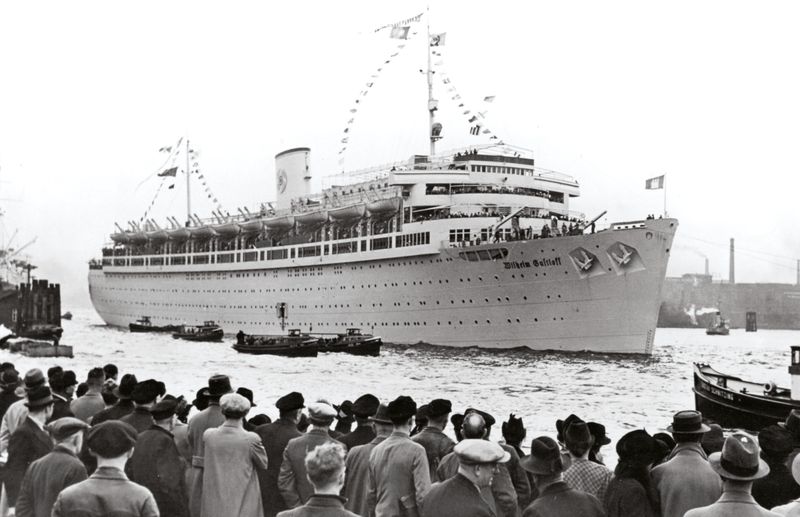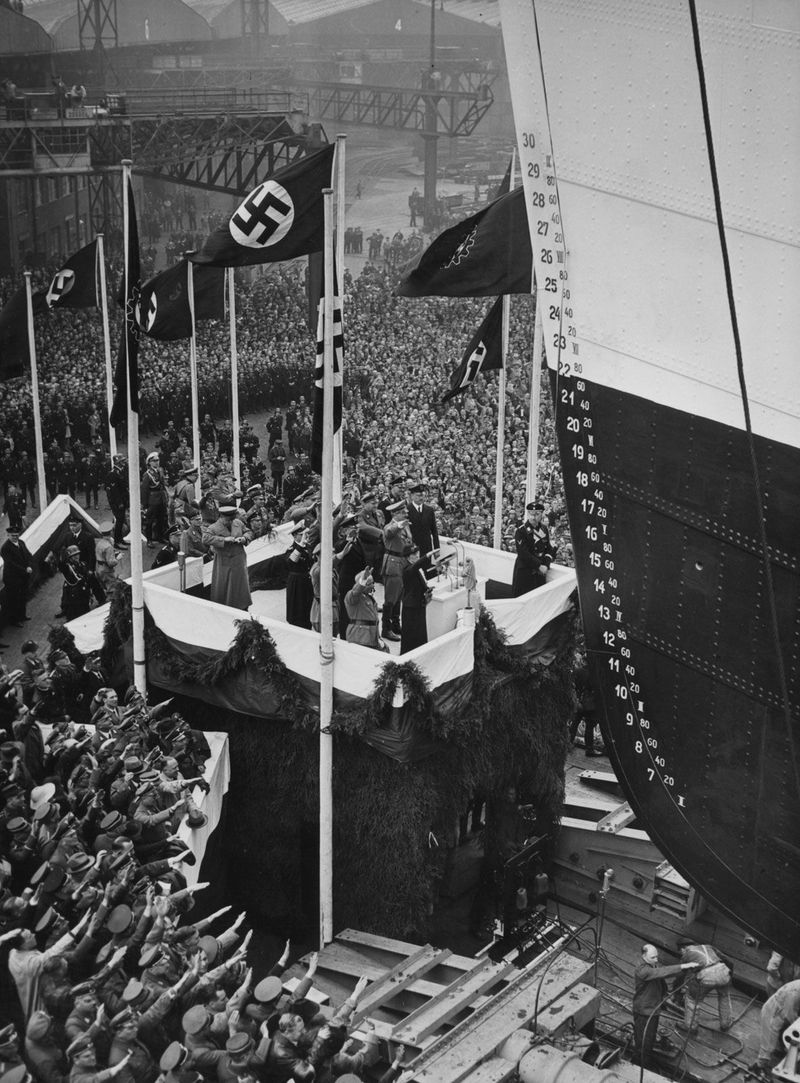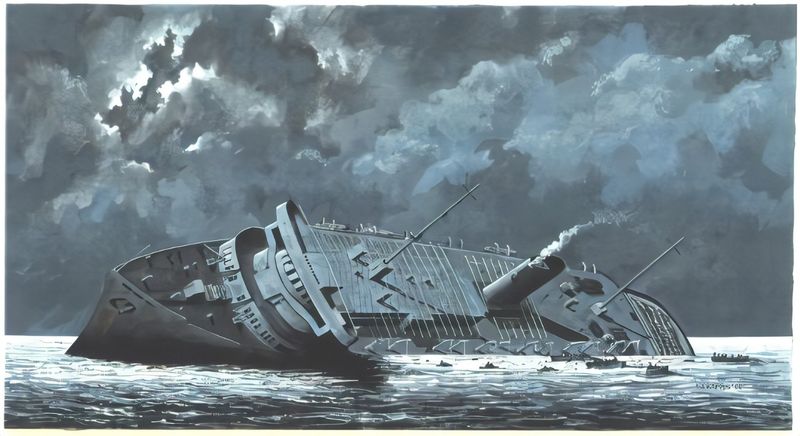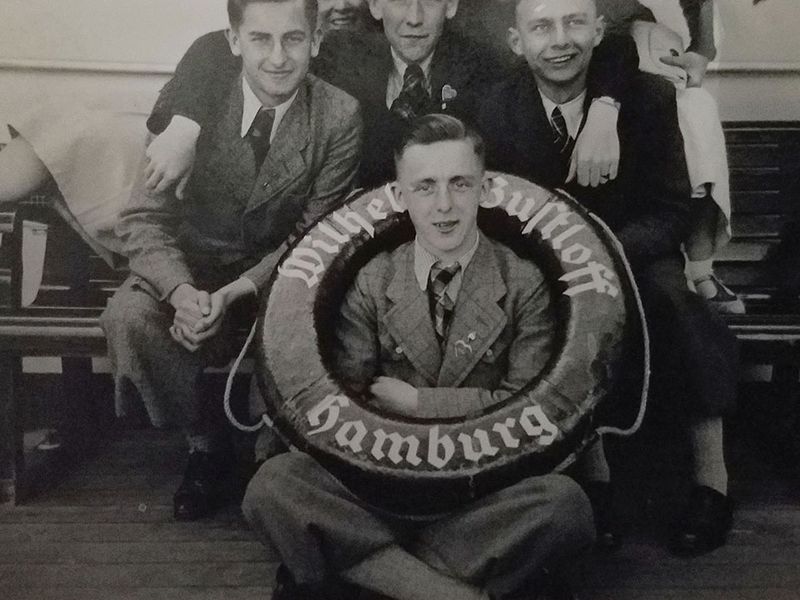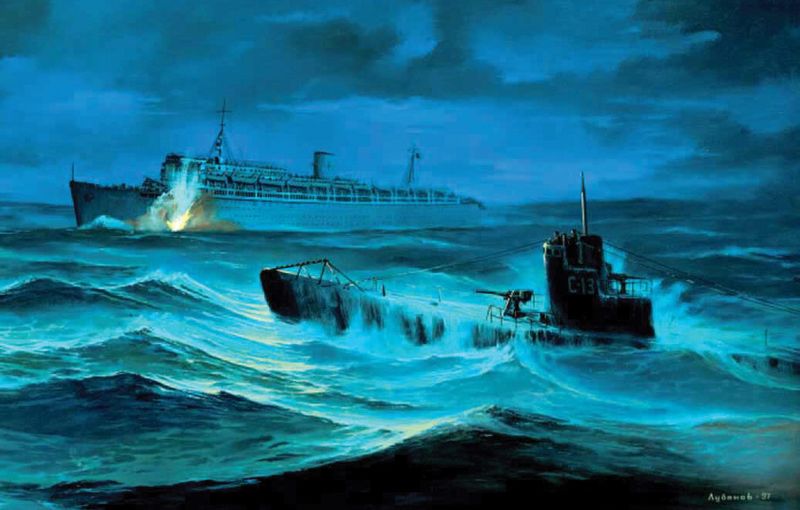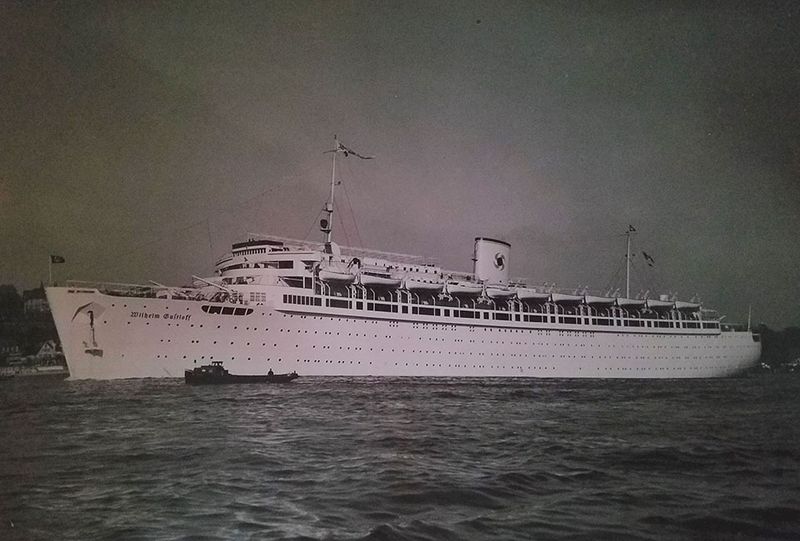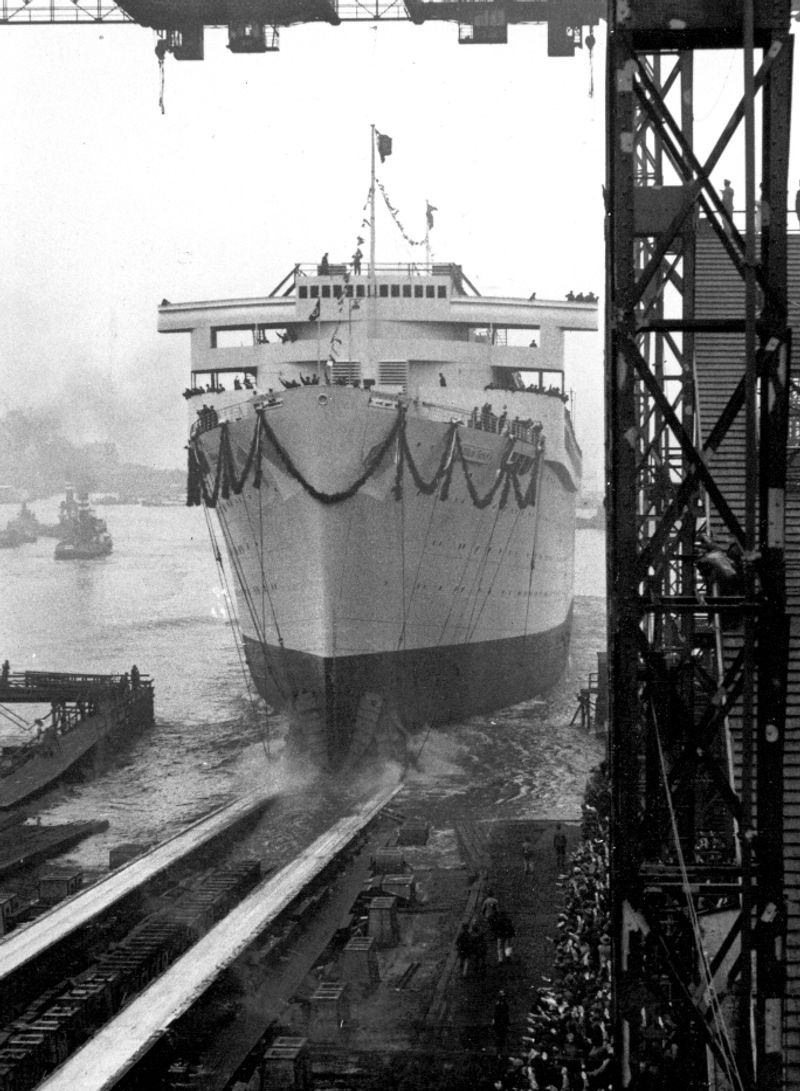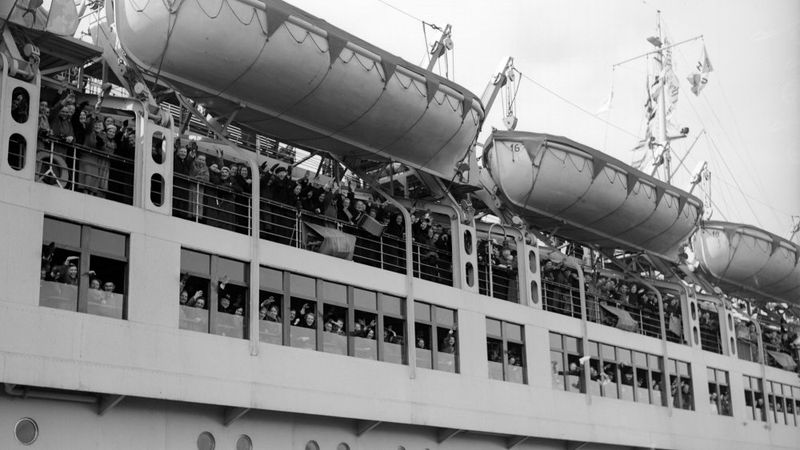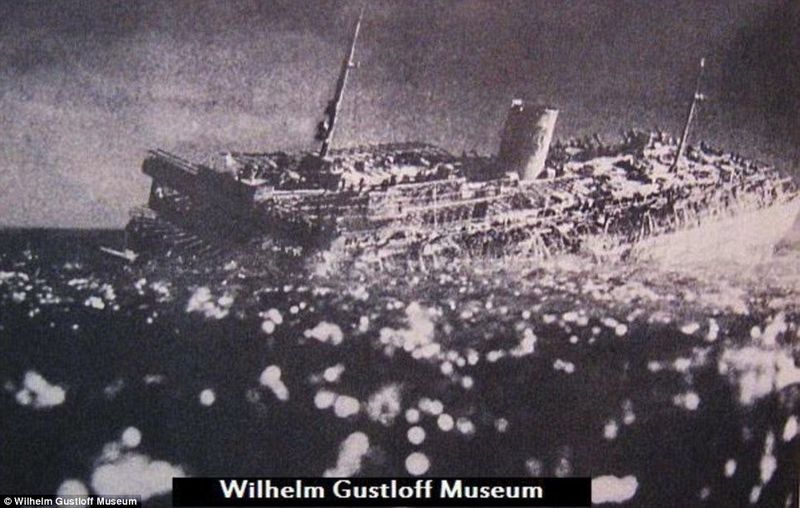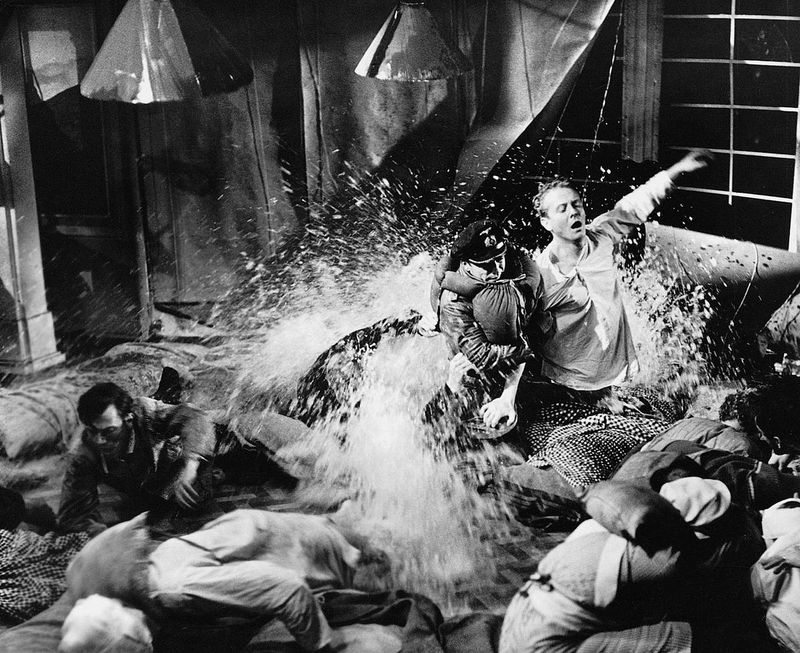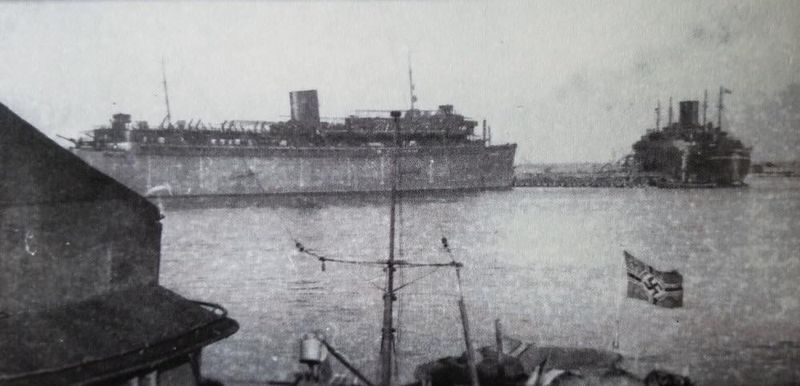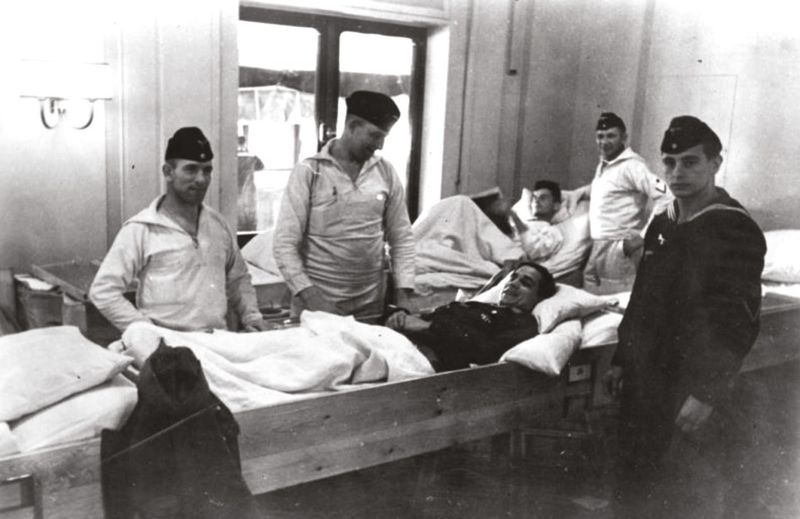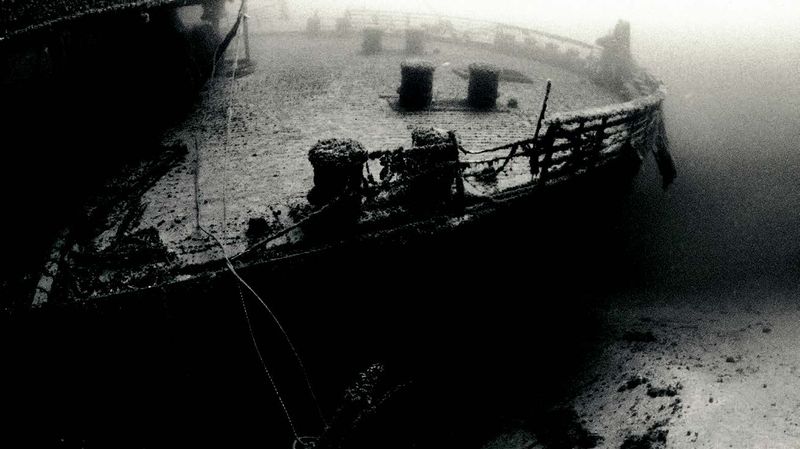Most people have heard of the Titanic—but few know about the Wilhelm Gustloff, a German ship whose sinking claimed over 9,000 lives, making it the deadliest maritime disaster in history. These 15 chilling facts shed light on this forgotten tragedy from World War II.
1. It Was Originally a Nazi Cruise Ship
The MV Wilhelm Gustloff was launched in 1937 as a luxury liner for the “Strength Through Joy” program. This initiative by Nazi Germany aimed to provide leisure activities for the working class. The ship stood as a symbol of German engineering and opulence.
It was never meant to serve in wartime operations. The vessel, with its sleek design and grandeur, hosted numerous voyages, offering vacations to German citizens. However, its role shifted drastically during World War II, marking a stark contrast from its intended purpose.
2. It Was Named After a Nazi Propagandist
The ship was named after Wilhelm Gustloff, a prominent Nazi leader in Switzerland. His assassination in 1936 provided the regime with a propaganda tool, immortalizing his name on this vessel.
Gustloff, who promoted Nazi ideology, became a martyr figure. His death was a rallying point for Nazi supporters, solidifying his influence posthumously. Naming the ship after him was both a tribute and a continued propaganda effort, linking the vessel to the broader narrative of Nazi heroism and sacrifice.
3. The Ship Was Overcrowded When It Sank
Built to accommodate around 1,900 passengers, the Wilhelm Gustloff was overwhelmed with over 10,000 people during its fateful journey in 1945. The ship was filled with refugees fleeing the Soviet advance, as well as wounded soldiers and crew.
The desperate need to escape led to severe overcrowding, with every available space occupied. This situation highlighted the dire circumstances faced by those on board, who saw the ship as their last chance for survival. The human load far exceeded its intended capacity, creating a tragic scenario.
4. Most of the Victims Were Civilians and Children
An estimated 5,000 children perished in the disaster, alongside numerous civilians. These individuals were fleeing the advancing Soviet Army, hoping to find safety across the Baltic Sea. For many, the Wilhelm Gustloff represented a final hope in escaping the horrors of war.
Families boarded the ship with a mixture of hope and desperation, unaware of the impending tragedy. The significant loss of young lives added a heartbreaking layer to the catastrophe, underscoring the indiscriminate nature of wartime suffering.
5. It Was Sunk by a Soviet Submarine
The torpedoing of the Wilhelm Gustloff was executed by the Soviet submarine S-13, commanded by Alexander Marinesko. On January 30, 1945, the submarine fired three torpedoes, each striking the ship with deadly precision.
The attack was part of the broader naval warfare during World War II. Marinesko’s decision was influenced by military objectives and personal motivations. The destruction of the ship marked a significant moment in naval history, with Marinesko’s actions reflecting the harsh realities of war.
6. It Sank in Less Than an Hour
Once the torpedoes struck, panic engulfed the Wilhelm Gustloff. The ship’s demise was swift, taking less than an hour to disappear beneath the frigid Baltic waters.
The rapid sinking left little time for organized evacuation, causing chaos among passengers. Many were trapped below decks as the vessel tilted and water rushed in. The speed of the sinking added to the tragedy, overwhelming any efforts to save more lives. It was a night of terror, marked by desperation and the relentless march of time.
7. The Water Temperature Was Below Freezing
Survivors of the initial impact faced another deadly challenge: the freezing Baltic Sea. The water temperature was below freezing, making survival difficult. Those who managed to escape the sinking ship had to contend with hypothermia.
In the icy waters, even strong swimmers struggled to survive for more than minutes. The cold claimed many lives, with exposure proving fatal quickly. The harsh climate became an unforgiving enemy, compounding the horror of the night and diminishing hopes of survival.
8. The Rescue Effort Was Inadequate
Despite the urgency, the rescue efforts following the sinking were meager. German ships nearby rushed to assist, but only about 1,200 people survived.
The large number of passengers and the freezing conditions hampered rescue operations. Lifeboats were insufficient, and chaos reigned as people scrambled for safety. The inadequate response highlighted the unpreparedness for such a disaster, leaving many to succumb to the harsh environment. This starkly contrasted with the desperate need for help.
9. Many Lifeboats Were Frozen in Place
In a cruel twist, many of the lifeboats on the Wilhelm Gustloff were frozen to the ship’s deck, making them inaccessible. Desperate passengers struggled to free them, but the ice proved a formidable barrier.
This situation added to the chaos and confusion as the ship sank. The frozen lifeboats symbolized the desperate and futile attempts to escape the impending doom. With limited options for safety, many faced the grim reality of their situation, trapped by both nature and circumstance.
10. Hitler’s Birthday Was a Key Factor in the Delay
Commander Marinesko had reservations about attacking civilian targets, but pressure mounted. The urgency to impress Soviet leaders before Stalin’s birthday on April 20 influenced his decision.
The need to restore his reputation played a role in the timing of the attack. This decision demonstrates how personal motivations and political pressures can intersect with historical events, shaping outcomes. The attack on the Wilhelm Gustloff thus became a complex interplay of war, reputation, and politics.
11. It Was Part of Operation Hannibal
The evacuation of the Wilhelm Gustloff was part of Operation Hannibal, one of history’s largest maritime evacuations. This operation aimed to rescue German civilians from the advancing Soviet Army.
The scale of the evacuation was immense, with hundreds of thousands of people seeking refuge. The operation underscored the desperation and chaos of war’s final stages. The Wilhelm Gustloff’s sinking marked a tragic chapter within this larger narrative, highlighting the perils faced by those fleeing conflict.
12. The Disaster Was Censored for Decades
For years, the tragedy of the Wilhelm Gustloff was downplayed by the Nazi regime, and later ignored by post-war governments. The scale of the disaster was censored to maintain morale and avoid further public distress.
The lack of recognition left the incident largely forgotten outside Germany. This censorship created a gap in historical awareness, overshadowing the magnitude of loss. Today, the shipwreck remains a somber reminder of wartime secrecy and the stories left untold.
13. It Outnumbers the Titanic and Lusitania Combined
The sinking of the Wilhelm Gustloff resulted in more fatalities than both the Titanic and Lusitania disasters combined. Despite this, it remains relatively unknown in popular history.
The overshadowing of such a massive loss highlights discrepancies in historical narratives. This disparity raises questions about which stories are remembered and why. The scale of the tragedy, with over 9,000 lives lost, emphasizes the enormity of the event, challenging us to reconsider historical significance and memory.
14. The Ship Was Packed With the Wounded and the Dying
Many aboard the Wilhelm Gustloff were already teetering on the brink of life and death. Hundreds of wounded soldiers, many unable to move, were among the passengers.
These individuals faced a grim reality, unable to escape once the attack commenced. The presence of these vulnerable passengers added a poignant layer to the tragedy. Their plight underscores the indiscriminate nature of war, where even those already suffering faced further despair. The ship became both refuge and tomb.
15. Its Wreck Still Lies in the Baltic Sea
Today, the Wilhelm Gustloff lies at the bottom of the Baltic Sea, preserved as a war grave. This silent underwater tomb is legally protected, preventing divers from disturbing its resting place.
The wreck serves as a somber reminder of the lives lost and the tragedy endured. It remains a poignant historical site, shrouded in mystery and reverence. The ship’s final resting place is a testament to a forgotten chapter of World War II, holding stories that continue to linger beneath the waves.

